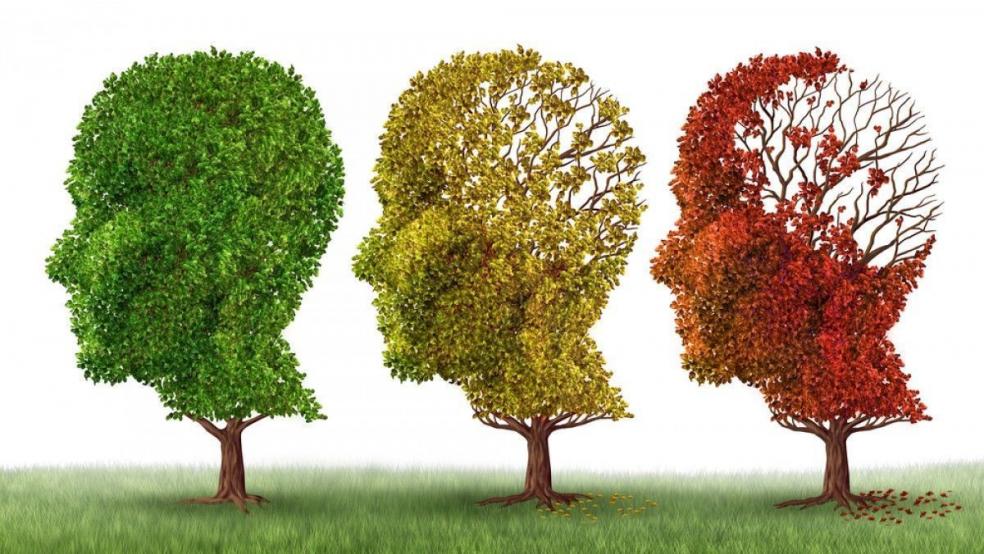In 2016 the oldest of the baby boomers start turning 70. While this milestone reminds us of the miracle of increasing longevity, it comes with a dark shadow: the global surge in Alzheimer’s disease as the population ages.
Alzheimer’s continues to defy the quest for a cure. A recent article by top researchers -- “Why has therapy development for dementia failed in the last two decades” -- offers a sobering review of the failure to find any serious treatment for the fastest growing health challenge on the planet, which is also on track to become a 21st century fiscal nightmare.
Related: Why More Workers Are Looking for a New Kind of Retirement
Even popular culture is now paying attention. The disease was the subject of a panel discussion at the 2016 International Consumer Electronics Show in Las Vegas. The hosts asked the tech-savvy CES audience to help join the fight against Alzheimer’s, including the huge need to step up our game on care as we continue to look for cure.
According to the panel, the first wave of technologies that have been designed to help those with Alzheimer’s and their caregivers have flopped. Designers haven’t yet understood the real problems that people confront when they are on their Alzheimer’s journeys, and so the tools they have created are of limited use.
The panel members explained the basics of Alzheimer’s to the tech audience so they could understand the problems that need solving. The panel collected an impressive group of thought leaders, with Dr. Jeff Cummings from the Cleveland Clinic, Professor Alex Mihailidis from the University of Toronto, and Terry Bradwell from AARP. It was moderated by Andrew Wright from Otsuka Pharmaceuticals, who oversees their Digital Medicines group.
As the next step in this critical work, the organizers of the panel announced a pitch session to be held by AGE-WELL just before the 2016 Alzheimer’s Association International Conference. At this event, tech entrepreneurs will present their ideas to leaders in dementia research, medicine, and industry.
Related: How Much Money Do You Need to Retire? A New Guide Might Scare You
The reason we need to focus on the disease is simple: if we don’t get better at caring for those with Alzheimer’s, this “miracle of longevity” is going to devastate us on personal, societal and global levels. Alzheimer’s already consumes over 1 percent of global GDP. Rates of Alzheimer’s will double every twenty years as we continue to extend longevity.
This is the need – and the incredible market opportunity – for technology. Done right, technology could prolong independence for those with Alzheimer’s disease, boost workforce productivity by helping their caregivers, and help build age-friendly cities, all while increasing revenues for tech companies and innovators.
This is where much of the tech industry swings and misses. Too much stuff is for the young and hip. This bias closes off a robust engine for growth and a future in which older people leverage innovations to age successfully.
Beyond Alzheimer’s, tech could address the natural physical deterioration of our skin, vision, hearing, bones and muscle -- those components of what the World Health Organization calls “functional ability.” A whole array of behaviors play into the progression of functional ability, and tech that helps us track, manage and improve multiple factors across our life-course could empower us to control this fundamental aspect of health.
Tech can also drive forward innovations in caregiving. Companies like Home Instead have crafted a new, hands-on way to provide care that is more personal and cost-effective than traditional institutions, including their free on-line Alzheimer’s training. Yet the possibilities of tech could catapult home-care even farther.
And the makers of technologies that solve for the problems of aging will earn more than just a warm fuzzy feeling and a pat on the back. Industries like fashion and cinema have already realized that older Americans represent a tremendous untapped market.
If growing interest at events like CES leads techies to follow suit, they will discover a new base of customers, and accompanying revenues, in an older but more prosperous economy.






